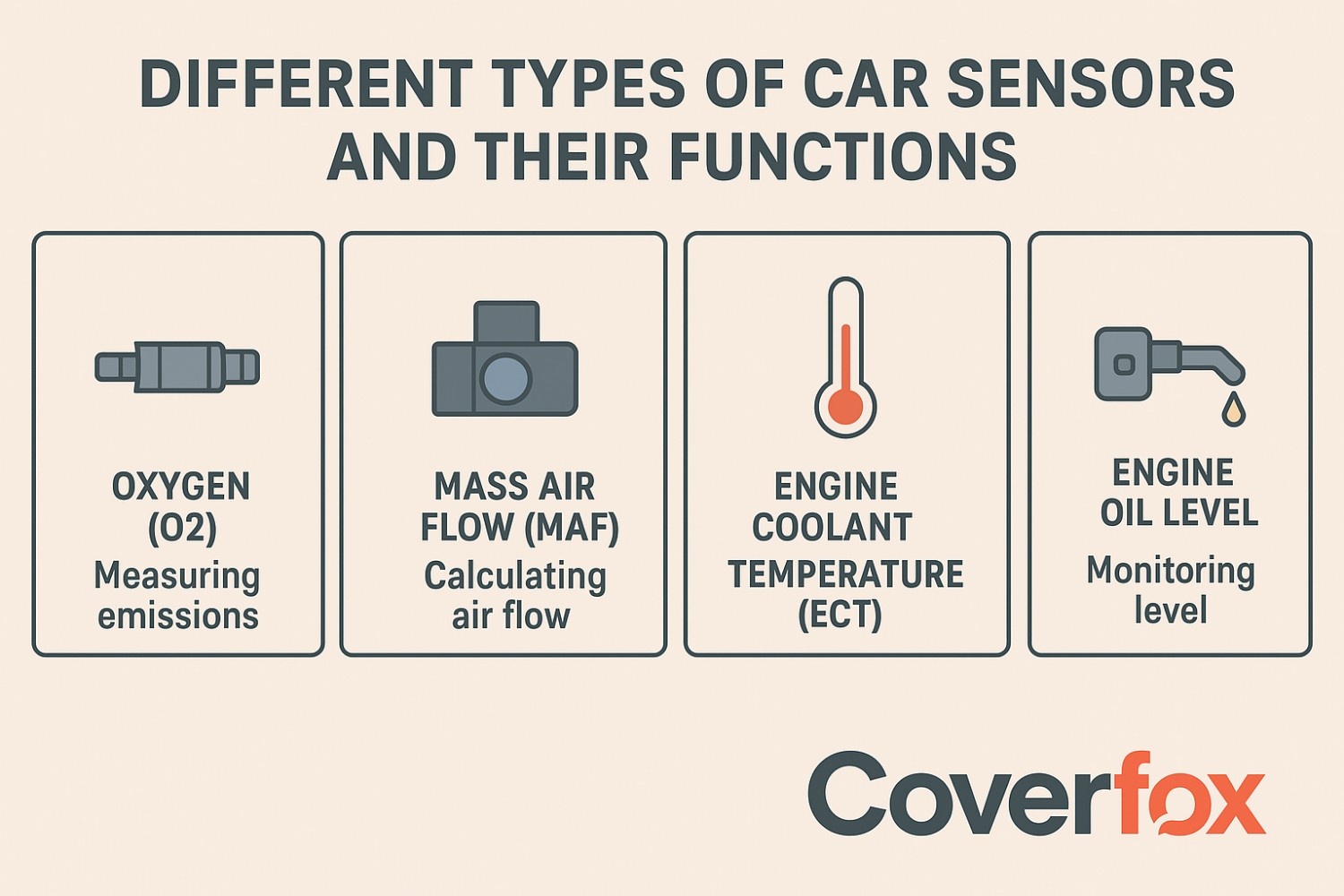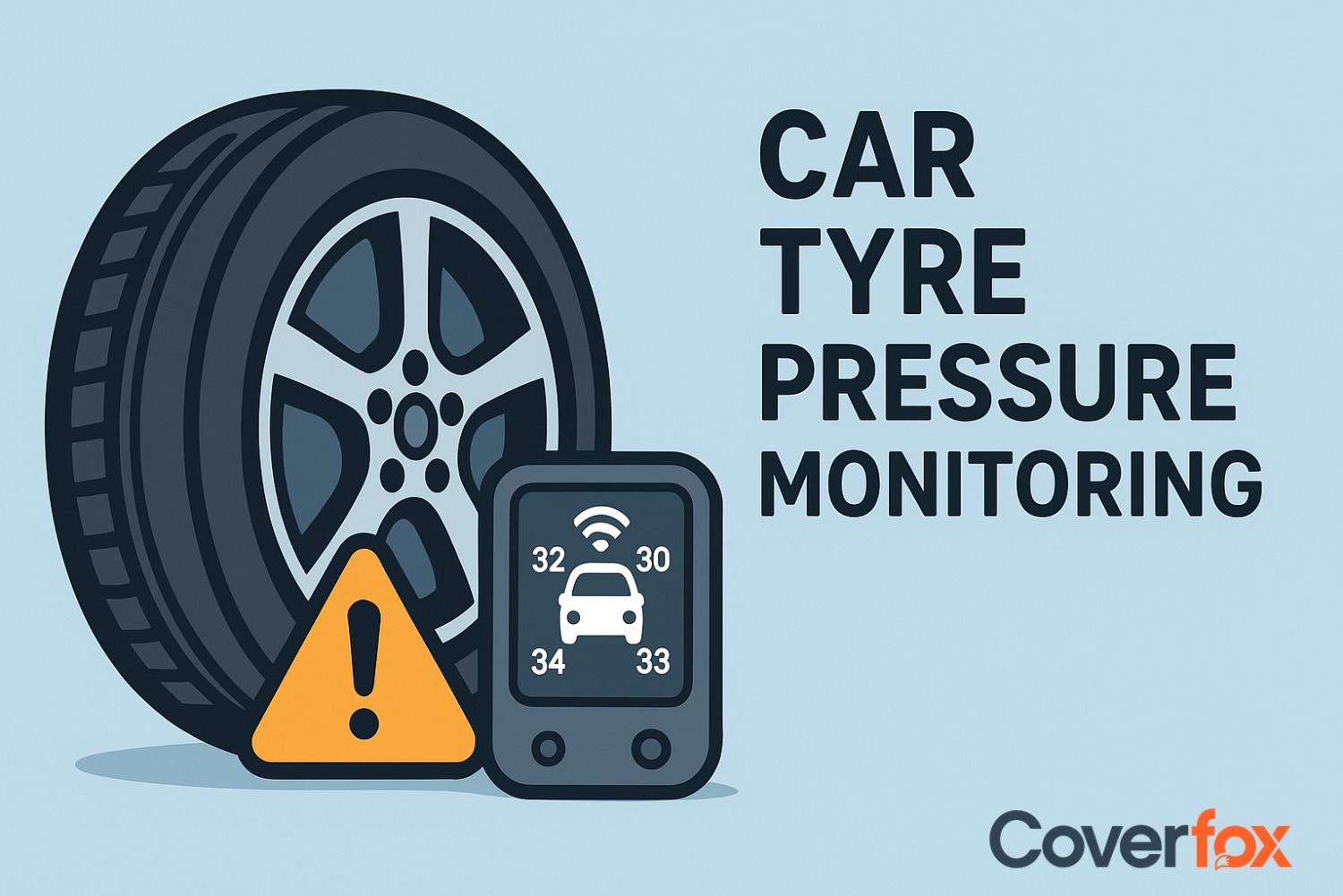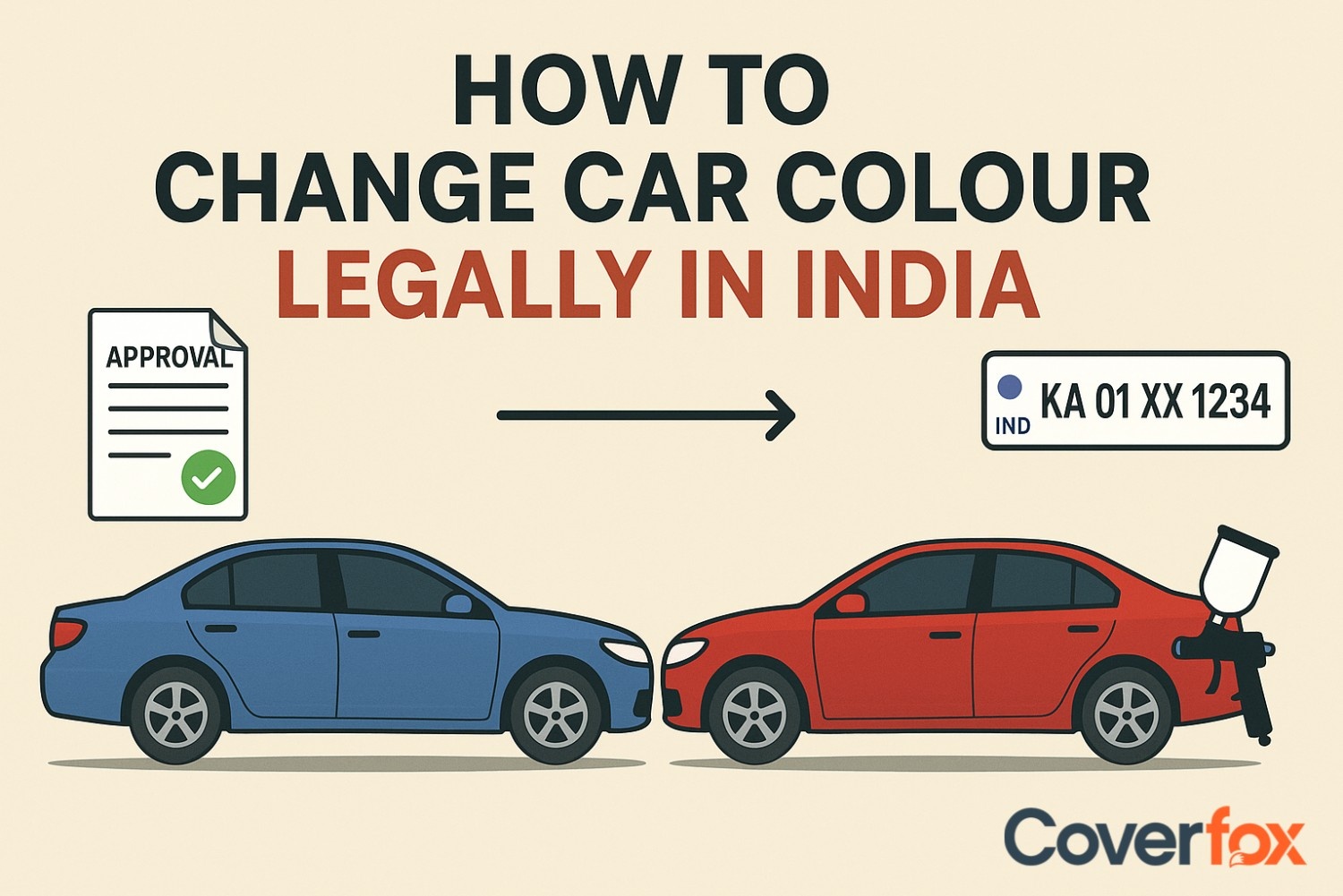While purchasing your dream car, you do not want to leave out any features or specifications and would want to have the best possible option for yourself. While going over the features of a car, you must have heard about the various sensors it possesses.

The most common sensor you've probably heard of is the parking sensor, which helps while parking a four-wheeler. But did you know, inside the cars, multiple sensors help the functioning of the car? In this article, you will learn about different types of car sensors and how they work.
What is a Car Sensor?
A car sensor is an electronic device used in cars to monitor and detect various physical parameters or environmental conditions, then convert that data into signals for the car's control systems (like the ECU – Engine Control Unit). These signals help optimise performance, improve safety, and ensure smooth vehicle operation. Most cars have a single ECU that oversees the functioning of the car, and the sensors are an essential part of the functioning of the ECU.
How Do Car Sensors Work?
Here’s how a sensor generally functions in a car:
Step 1: Detection of a Physical Parameter
The sensor detects a specific physical or environmental parameter, such as temperature, pressure, distance, light, speed, or gas levels, using its built-in sensing element.
Step 2: Conversion to Electrical Signal
The detected physical input is converted into an electrical signal (voltage or current). This signal changes based on variations in the parameter being measured.
Step 3: Signal Transmission to the ECU
The electrical signal is transmitted to the ECU (Engine Control Unit) or other control modules in the vehicle. This is usually done via the car's onboard wiring system or communication network (like CAN bus).
Step 4: Data Interpretation by ECU
The ECU receives the signal and interprets the data based on pre-programmed algorithms. It understands what the sensor is reporting and checks whether the values are within safe or optimal ranges.
Step 5: Response or Action Triggered
Based on the sensor data, the ECU makes real-time decisions and sends commands to relevant components.
Step 6: Feedback Loop
Some sensors work within a feedback loop where the ECU constantly adjusts system performance based on real-time sensor inputs, improving efficiency and safety dynamically.
Why Are Car Sensors Important?
Car sensors are not only important for the proper functioning of the ECU, but also to:
- Ensure engine efficiency and fuel economy
- Reduce emissions
- Enhance driver safety and comfort
- Detect and prevent potential malfunctions
- Enable modern features like ABS, airbags, cruise control, and ADAS systems
Types of Automotive Sensors
Today, there are many sensors fitted into the car, with modern tech to ensure smooth travels. Each sensor has their own purpose, defining its function. Here are the different types of automotive sensors that are commonly found in a car:
| Type of Sensor | Function |
|---|---|
| Oxygen (O2) Sensor | Adjusts fuel-air mix based on exhaust oxygen. |
| Mass Air Flow (MAF) Sensor | Measures incoming air to control fuel injection. |
| Engine Coolant Temp (ECT) Sensor | Monitors coolant temperature for engine management. |
| Manifold Absolute Pressure (MAP) Sensor | Gauges air pressure to assess engine load. |
| Engine Oil Level Sensor | Detects oil quantity and warns if low. |
| Crankshaft Position Sensor | Tracks crankshaft speed and position. |
| Camshaft Position Sensor | Monitors camshaft for valve timing control. |
| Knock Sensor | Senses engine knock and adjusts ignition timing. |
| Engine Oil Pressure Sensor | Measures oil pressure to prevent engine damage. |
| Air Intake Temperature Sensor | Reads air temp to optimise combustion./td> |
1. Oxygen (O2) Sensor
The oxygen sensor is located in the exhaust system and measures the amount of unburned oxygen in the exhaust gases. It helps the engine control unit (ECU) determine whether the air-fuel mixture is too rich or too lean. The 14.7:1 air-fuel ratio is important because it ensures optimal combustion, balancing power, fuel efficiency, and low emissions. This sensor is important for adjusting fuel and ensuring optimal combustion. By doing so, it improves fuel efficiency and reduces harmful emissions. A faulty O2 sensor can lead to poor mileage and increased pollution.
2. Mass Air Flow (MAF) Sensor
The MAF sensor is situated between the air filter and the intake manifold. It measures the volume and density of air entering the engine. This data allows the ECU to determine how much fuel to inject for efficient combustion. Accurate air measurement is key to maintaining performance, fuel economy, and emission control. A malfunctioning MAF sensor can cause stalling, rough idling, or poor acceleration.
3. Engine Coolant Temperature (ECT) Sensor
The ECT sensor monitors the temperature of the engine coolant. It sends signals to the ECU to manage engine functions like fuel injection timing, ignition timing, and cooling fan operation. This sensor plays a vital role in engine warm-up and prevents overheating. A defective ECT sensor can result in reduced performance or engine damage due to inaccurate temperature data.
4. Manifold Absolute Pressure (MAP) Sensor
The MAP sensor is installed on the intake manifold and measures the pressure within it. This reading helps the ECU determine the engine’s load and calculate the proper air-fuel ratio. It’s essential for controlling ignition timing and fuel delivery. Inaccurate readings from a bad MAP sensor can lead to poor engine performance and increased emissions.
5. Engine Oil Level Sensor
This sensor monitors the level of oil in the engine’s oil pan. It alerts the driver when the oil drops below a safe level. Maintaining proper oil levels is critical to ensuring engine lubrication and avoiding friction-related damage. Without this sensor, a driver may unknowingly run the engine on low oil, leading to severe wear or even engine failure.
6. Crankshaft Position Sensor
Mounted near the crankshaft, this sensor records the position and rotational speed of the crankshaft. It provides crucial timing information to the ECU for ignition and fuel injection. This sensor ensures the engine’s pistons and valves move in perfect synchrony. If it fails, the engine may stall, misfire, or not start at all.
7. Camshaft Position Sensor
The camshaft position sensor detects the camshaft’s rotational position. It works in coordination with the crankshaft sensor to control valve timing and fuel injection sequences. It ensures proper synchronisation between intake/exhaust valves and piston movement. A faulty camshaft sensor can cause poor engine timing, reduced fuel efficiency, or trouble starting.
8. Knock Sensor
The knock sensor detects vibrations caused by engine knocking or pre-ignition. It signals the ECU to adjust ignition timing to prevent damage. Engine knocking can lead to severe internal wear if not corrected promptly. This sensor protects the engine by ensuring smooth combustion and prolonging engine life.
9. Engine Oil Pressure Sensor
This sensor measures the pressure of the engine oil circulating through the system. It helps ensure there’s enough oil pressure to lubricate engine components properly. If oil pressure drops, it triggers a warning to prevent damage. Running an engine with low oil pressure can cause major mechanical failure.
10. Air Intake Temperature Sensor
Located near the air intake manifold, this sensor measures the temperature of incoming air. The ECU uses this data to adjust fuel injection and ignition timing based on air density. It's important for optimising combustion under varying weather and engine conditions. Inaccurate readings can lead to poor performance and increased emissions.
Summing Up
Hence, car sensors are an important factor for proper fuel efficiency, the functioning of the ECU in the car and managing physical phenomena inside the car. These sensors, although often overlooked, are an essential component that enhances and smooths the vehicle’s running. Protect your car with car insurance to ensure peace of mind while driving, as sensors smooth your ride.
Explore More:
Check Engine Light: Causes and What It Means
Importance of Car Airbags in Vehicle Safety Systems
Reverse Camera in Car: Features, Types & Safety Benefits
Frequently Asked Questions
How many sensors are there in a modern car?
There can be more than 10 sensors at a time in a modern car.
What is the most important sensor in a car?
There is no specific “important” sensor, however the ECU is the main component that helps with the working of the car, where the sensors report to.
What are the advantages of having so many sensors in vehicles?
Sensors help regulate physical phenomena such as temperature, fuel intake, oil, pressure, etc. Each sensor adds a layer of smoothness while driving the car, minimising manual labour and damage.
How do sensors work in cars?
Sensors read their particular physical attributes, convert the data into an electrical signal and send it to the ECU.
Can a car run without sensors?
A car could technically turn without some sensors, but mainly, it depends heavily on sensors for proper functioning.
What controls all the sensors in a car?
The ECU controls all the sensors in the car.





